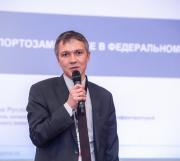
A subsystem of Russia's "Electronic Budget" on fully domestic software
Creation of a completely import-substituted component of the state information system using the example of the PUR KS - the "Electronic Budget" subsystem, the key state integrated information system for managing public finances. The presentation presents the subsystem architecture, performance optimization history and monitoring description. The speaker will talk about the advantages and difficulties of using an import-substituted system for the public sector, as well as about the nuances that departments should take into account when implementing open source solutions and solutions from Russian developers.